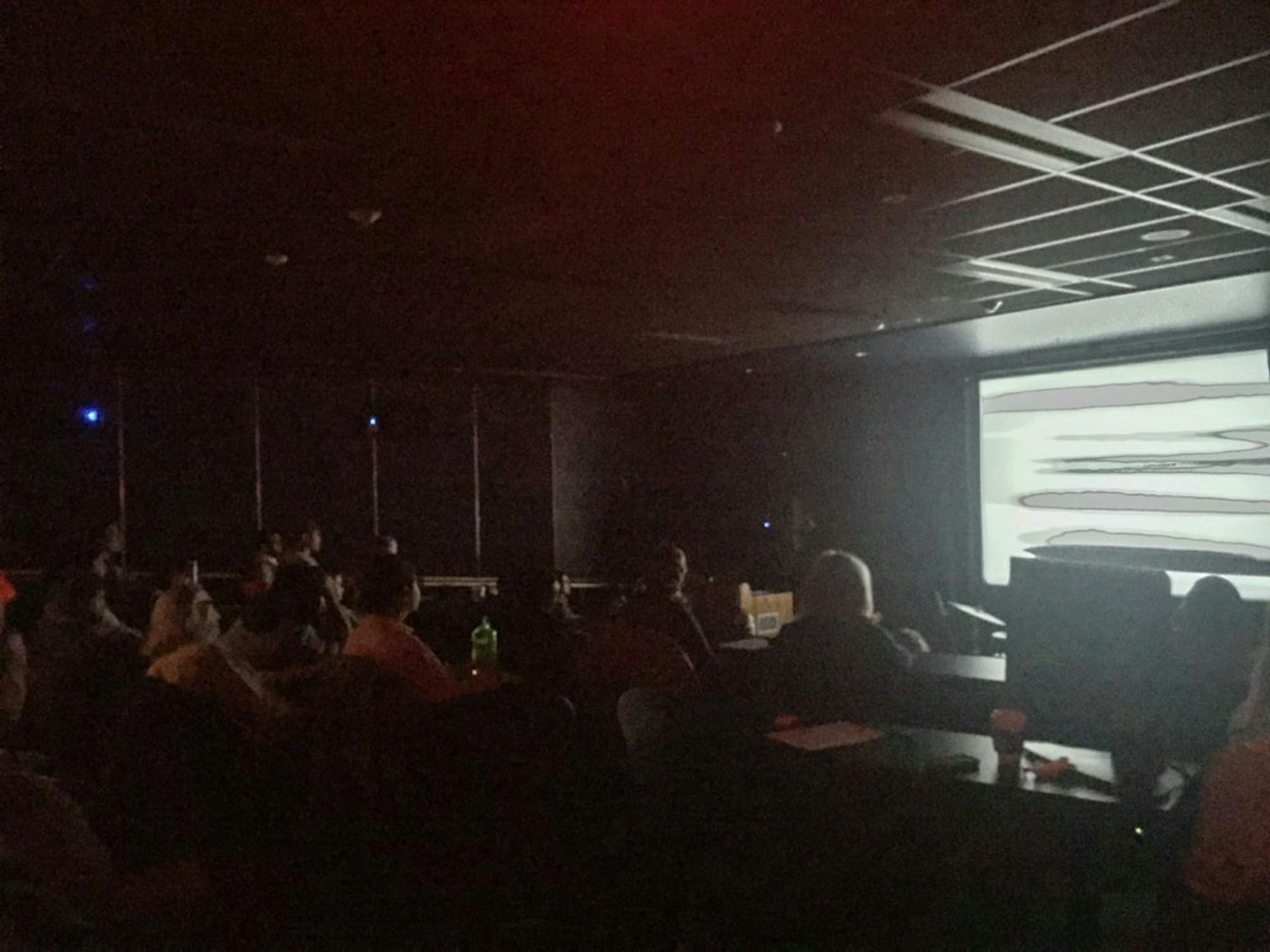Exploring the peculiar and innovative world of experimental art, the digital music and film and music department collaborated this spring to produce EYEWASH: Experimental Images and Sounds, a series that brings experimental film, video and sound artists to campus for screenings and performances.
After realizing many experimental artists utilize both audio and visual elements in their works, film and media professor Jodie Mack said she and music professors Spencer Topel and Ashley Fure worked together to curate this year’s program, incorporating sound for the first time since EYEWASH began in 2011.
The collaboration between the two departments was relatively straightforward, Fure said, because the audiences of the previous EYEWASH events and separate digital music-sponsored events held prior to the collaboration overlapped.
One of the goals of the series, Mack said, is to represent various unconventional approaches to making time-based art.
“We’re hoping to broaden the consciousness amongst the student body and community about the possibilities of art that plays out in time,” she said.
In addition to exposing students to different modes of art, Mack said the series helps students develop as artists.
“We want to provide an opportunity for students and community members to engage with working artists,” she said.
The spring series kicked off on April 12 with a presentation by New York-based sound and visual artist and composer Marina Rosenfeld, who performed live turntable collages.
During her demonstration, Rosenfeld used dub plates, a vinyl-like material made out of acetate, to create a textured and highly conceptual sound.
Digital musics graduate student Kyle Kaplan ’16 said Rosenfeld’s process involved creating gestures, or movements, by using the dub plates to press her own sounds while looping and sending effects through delayed pedals.
Fure said Rosenfeld’s art was appealing for EYEWASH programming because it was both conceptual and aesthetic.
“It’s a critical practice and process that engages sound,” she said.
The series continued this past Tuesday with artist, composer and percussionist Eli Keszler performing a semi-improvisational set for a packed room.
The evening began with an unscheduled screening of “Articulation of Boolean Algebra for Film Opticals” (1975), a film by the late Tony Conrad, an avant-garde video artist and experimental artist who Keszler said inspired him and many other artists in the avant-garde community.
After the film, Keszler set up a drum set, microphones and two large lights for his performance. He said the installation of his work is involved in his general artistry. He uses the installation space to structure music and allow the environment to dictate the music. While this performance did not incorporate a large-scale installation space, it was still overwhelmingly distinctive and emotional.
Keszler played his drums aggressively while using audio recordings from his own compositions to create a mesh of style and sound. Throughout the performance, he changed the sound of his drumming by adding weighted objects. He called the drum a blank slate, which lets him build his own aesthetic style.
The performance incorporated a bow that Keszler used to create sound by sawing on the side of the drum. He said this component of the performance spawned from his desire to figure out a way to create long tones on the drum.
Keszler’s performance was filled with passion and technical skill that culminated in a round of applause from the audience. Julie Solomon ’17 said Keszler’s performance was unlike anything she had ever seen before.
“His use of the drum is innovative and exciting,” Solomon said. “Watching him play was mesmerizing.”
Prior to EYEWASH, Keszler gave a talk to students in Music 34, “Advanced Sound Design.” Macy Ferguson ’16, who is enrolled in the music class and attended the show, said Keszler spoke about the various phases of his life during which he experimented with different mediums, spaces and art forms.
“I think that compilation of variety and depth of experience really came through in his performance,” Ferguson said.
The series will continue with the EYEWORKS Festival of Experimental Animation on May 10 and a performance by visiting artist Jennifer Levonian on May 24. Both events will take place at 7 p.m. in the Black Family Visual Arts Center, room 001.




